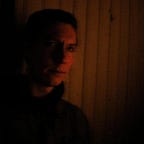These photos show Chinese Canadians’ entrance into the middle class, after enduring decades of racist laws
Up until the 1940s, Chinese Canadians were prevented from professional careers and targeted with dehumanizing laws
Canadian troops began heading to Europe in the fall of 1939. Germany had invaded Poland, drawing England and France into war, and Douglas Jung enlisted in the army to do his bit. Then he waited — while Paris surrendered in the summer of 1940, and Canada declared war on Japan following Pearl Harbor, and Hong Kong fell on Christmas Day 1941. Still, he was never called to active duty.
That’s because Chinese Canadians spent the war years much as they always had, virtually imprisoned. Although spared the dehumanizing internment of Japanese Canadians during WWII, Chinese Canadians like Jung were barred from active service in the military because of their ancestry. Jung was also barred from leaving the country for more than two years. And from owning property outside of Chinatown. And from working in white-collar professions. And from voting. Despite being born in Victoria in 1924, he was barred from citizenship.
Ever since 1885, three years after America’s own anti–Chinese immigration act, when the government imposed a $50 head tax on all new arrivals — it would max out at $500 by 1903 — the Chinese community had been forced into a separate society from their European neighbors. British Columbia was particularly opposed to all Asian migration, but while the Japanese had restrictions placed on them, and legislative acrobatics prevented almost all Indians from entering the country, the Chinese were specifically targeted with the most repressive and dehumanizing laws. Relegated to crowded apartments, separated from family by an ocean, and subject to seething hatred by neighbors, the Chinese community turned inward. They brought fraternal organizations across the sea with them or adopted Western orders like the Freemasons. They started associations to arbitrate internal problems as well as to represent their community to Canadian parties. They set up social welfare programs and operated their own banking system. For those immigrants fortunate enough to have brought their families over, there were Chinese schools. But, as with the Chinese Americans, although isolation was pressed upon them, it further alienated them from outsiders who whispered of opium, prostitution, gambling, and disease.
And so it was that Jung and other Chinese Canadian soldiers weren’t called up for active duty until 1944, when Chinese speakers were needed to train guerrillas in Southeast Asia. Upon their return from overseas, they found that attitudes toward them were shifting. China and Canada had been allies and worked together against a common enemy. Chinese men fought for their country, and at home Chinese communities pitched in buying war bonds like everyone else. Union leaders, clergy, and veterans’ associations began pushing for change. In 1947, the federal government granted citizenship to qualifying Chinese Canadians and opened its borders to Chinese immigrants for the first time since the 1923 Chinese Immigration Act.
The postwar era became the fulfillment of the immigrant dream. The proverbial walls around Chinatowns cracked and a young generation of native-born kids were finally able to pursue professional careers instead of wasting their years in restaurant kitchens and laundromats. They could buy homes and walk the streets as full-fledged citizens. Wallace Chung — who spent most of his life collecting the photographs, artifacts, and ephemera from which these images were taken — was one of them. Born in Victoria and a student of medicine at McGill University in Montreal, he moved to Vancouver in 1953 and spent 40 years as a heart surgeon. His wife, Madeline Chung, immigrated from Hong Kong in 1949 and was the first Chinese-speaking trained OBGYN in the city.
After the war, Douglas Jung got involved in politics. In 1957, ten years before broad restrictions against Asian immigrants would come to an end, he was elected to represent his district in Vancouver in Parliament, the first Chinese Canadian to serve as an MP. A federal building in Vancouver was named in his honor in 2007.
At Timeline, we reveal the forces that shaped America’s past and present. Our team and the Timeline community are scouring archives for the most visually arresting and socially important stories, and using them to explain how we got to now. To help us tell more stories, please consider becoming a Timeline member.
